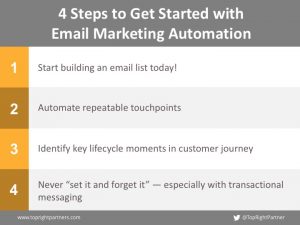Becoming good at any aspect of social media marketing is a tall order in the first place because it is just plain difficult and challenging.
However, becoming a professional in this arena takes determination, focus, and a real sense of the bigger picture. We’d like to help you along the way.
In this article, we are going to focus on what we feel would be the steps you would have to take to become a social media marketing pro in just 12 days.
That’s right. We don’t do things by halves. This period is pretty tight, but we think it is certainly doable. So hang onto your hats.

If we’re going to make you a pro, we’re going to have to get you a vision. A vision for your social media is incredibly important because if you don’t have one, the whole thing will fall apart, probably by day three.
The vision means you are sitting down with your team and working out what it is that you need and want from your social media. Only a fool (or someone with an incredibly huge budget) would jump into social media blindly, so spend today discussing, at length, what you want to achieve with social media.
There are examples of types of goals you may have with social media:
Many companies want to do this, and it’s easy to see why. Social media is an excellent way to build a brand online. And if customers are in the dark about your brand and what it stands for, you’re losing out. It’s all about awareness.
If customers and prospects become aware of your brand through the messages you present on social media, they will retweet, share and hashtag until your brand spreads far and wide.
Who would need this goal? Simple. Any business that has no presence on social media at all and wants a way forward. Or, a new business that wants to build a strong brand online.
Traffic is the bedrock of all successful companies online. Of course, just getting traffic is never enough. There has to be a way of turning that traffic (or part of it) into leads and a revenue source. But the traffic has to be there in the first place. Many companies find that social media is a great way to build traffic.
The more traffic you bring via social media, the more likely people will interact with your site, engage with your business, and buy. It just gives you more of a chance in the Wild West that is the Internet. So using social as a traffic source is most definitely a worthy goal.
Yes, you can do this through social media. By using social media to show your best posts, for example, you’re more likely to get people coming to your site to see more of them. This increases the time spent on your site and, therefore, improves the chance of finding leads and making conversions.
This is a strong goal because it firmly entrenches social media as a supportive measure for your website. This truly is using social media as a tool, in other words. Note how it is different to goals one and two, which are about awareness, and traffic respectively.
Social media (especially channels like Twitter and Facebook) are incredibly useful for developing engagement and relationships. You can use social as a dedicated customer service channel for example.
This is different to the first three goals because you are using social to communicate more than anything else. If you want to use it solely as a tool to build engagement and conversation (larger companies, in particular, do this), then this could be a clear goal for you.
By the end of this day:
You should have chosen which goal you are going to pursue with your social media marketing.
This is a large part of the process. It requires that you think carefully and in great detail about what you are going to do with your social media strategy, and how it is going to pan out.
The first real aim here is to work out who the customer is that best makes up your audience. Of course, you may have more than one customer type, and this is where segmentation comes in later in the planning process.
If you can create a customer profile that is as detailed as possible it will allow you to create content that speaks to them and fulfills their needs. This is a vital part of the process and is not something that can be overlooked or given lip service. You need to know who your customer is and what you are going to say to them.
The next stage of the planning process involves looking at platforms, and this is only possible once you know who you are going to be talking to.
For example, well over half of the Facebook audience is female. This may well have a direct impact on the platform you use and the content you deliver. So It is worth thinking about that if you sell male grooming products. We’re not saying stay off Facebook (because most of the planet is on it) but we are saying that Facebook need not be the only social media channel you use.
Going back to the female demographic again, did you know that 80% of the users of Pinterest are female? Do you have a female demographic? In that case part of your social media planning process should be around considering Pinterest.
Once you are totally 100% clear on the people you are going to be targeting and the channels you are going to be using, you should create a content calendar. Take a good look at what is working for competitors using a tool such as Locowise benchmarking. If you can see what your competitors are doing, and it is working well for them, consider publishing content to that kind of spec and create a content calendar around it.
Executives are not always the first to buy into social media, let alone understand it. You need to ensure that day five is about setting things in place that help executives get the picture. This will ensure that you aren’t locked in a cupboard with your laptop ‘doing’ social media because no one important values it.
Okay, that last scenario may not be a reality in every single company in the world, but social media needs buy-in, and not just for budget reasons. Businesses need to understand it. Everyone within a business should be able to contribute if they need to. When an executive reads the company Twitter feed on the tube on the way home, they should not feel out of the loop. It is all about ensuring that the business is a team, and getting buy-in makes this happen.
We can’t give you a step by step hourly plan for today, but what we will suggest is that you do at least one of the following. They are all great ways in which you can get more buy-in, not just from the suits at the top of the tree, but also your colleagues. And then you won’t have to get all cozy in that cupboard.
With executives, it is often about costs, in fact it is only ever about costs. The same holds true for investors and anyone else who has a serious stake in the company. If you need to get buy-in for your social media strategy, consider putting together a report that shows how social media can affect sales over the next 2-3 years. Think about lead generation and conversion for example. Aim to make a tangible ‘win’ scenario for anyone who is either going to sign off on a budget or will need to be ‘on your side’ in the months ahead.
Have a clear social media plan and be ready to show that to anyone who has a direct impact on the funding and success of the social media strategy you are about to implement. People, naturally, feel a lot more assured when there is a clear and carefully written plan in front of them.
Be sure to align any social media goals with the stated business goals that the company has. If everything you plan to do can somehow tie in with what the business is aiming to achieve, you can’t go wrong.
You should have something like a clear plan to get executive or stakeholder buy-in to your new social media strategy.
Having a clear plan for the content you create isn’t just about putting a calendar together though. It’s also about having a clear understanding of what you will and will not post. Having some clear rules about your content makes it a lot easier to keep the momentum going.
Create a set of rules and guidelines for your content. We suggest thinking about the following:
• Make it actionable for your audience. Can they do something after they have seen your content?
• Make it shareable.
These are just a few guidelines we would follow. Once you have them in place for yourself, create a sheet of paper or easy to access file somewhere and ensure anyone who creates social media content in your organisation is fully clear on the guidelines.
This day is important because the most successful content on social media is visual content. It has to be something that people can see if people are going to see it, in other words.
Develop a library of pictures (including ones of your team) that you can draw upon to create visual posts. Get a stock of images ready through stock photo libraries online for example. The basic rule of thumb here is that if your post doesn’t have an image attached to it in some shape or form, there had better be a good reason.
As your feeds and streams start to get noticed, your customers are going to start interacting. This is not something you can run away from so it is important that you act accordingly. Set up a scenario whereby either you or a member of your team can devote a part of the working day (not week) to responding to customer interactions online.
This is an important part of the equation because a big part of the trust you receive and develop will rely on quick and human interaction. Don’t have any stock messages, but instead timetable a slot in the day, starting a few weeks ahead, where someone can respond to customer messages and comments etc.
Why do we need a day for this? Well, you may need to train someone, or you may need to spend six hours finding someone in the first place. But if you have a person who can act as the human face on Twitter, for example, it will add massively to your success online.
This is the biggie, and the real reason you are about to do what’s ahead. Metrics are the measurements by which you can tell whether or not a tweet worked, or if a whole campaign tweets worked. You can do it yourself by looking at the following metrics that will need to be measured as part of any social media strategy:
• The conversion rates
• The traffic that your social channels sends to your website
• The click-through rates
• Follower growth
These are just a few of the metrics you will need to look at, but the biggest, arguably, is engagement. We use the engagement rate to measure the quality of content and overall social media activities.
Be aware that the executives or stakeholders will need to see this data. If they don’t see something on a regular basis, they will start to get concerned. This leads us to the day eleven.
This is crucial to keeping the whole thing alive. You will either have to report to someone or inform yourself, so work out a part of your calendar where you are doing either.
You can pull up information through a provider such as Locowise, for example, or create your system whereby you create a report on the data you have. Whatever you do, you will need a system that helps you. Create a template for the report and a means of communicating it to everyone who needs to see it. You’ll need to report regularly, so the quicker you have a template and a process, the better.

The worst thing in the world is getting to the end of month six and realising you don’t have the foggiest idea of how to communicate this important data.
Just get started. By now you should have a customer profile, an idea of where you are going to post, and a clear plan of what you are going to post and where.
You should also have a content calendar and some clear guidelines and rules for the content you produce, not to mention plenty of visuals to make that content interesting and attractive.
You’ve also got buy-in from your management, agreement on what metrics to monitor and how to report on your activities.
Now go for it. Create the content. Follow your plans. Keep it focused and regular, and informed by what you have learnt during these twelve days. Most importantly keep learning, improving and optimising. Evolve and advance your plan as you go along.
(115)
Report Post








